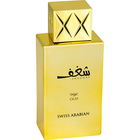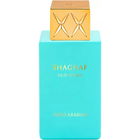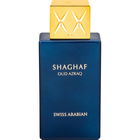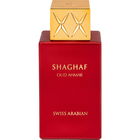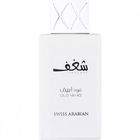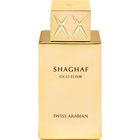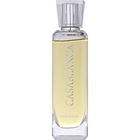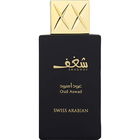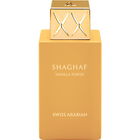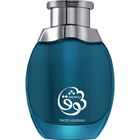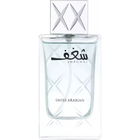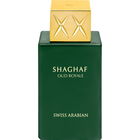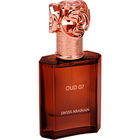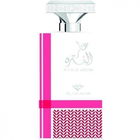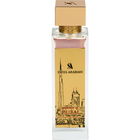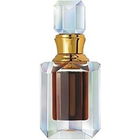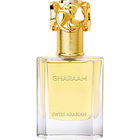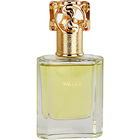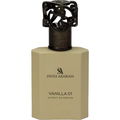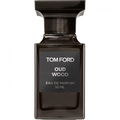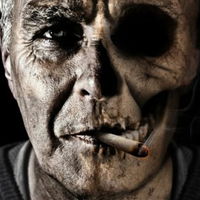
Caligari
76 Reviews
Translated · Show original

Caligari
Top Review
44
Counterexamples of Nature
18, 35, 47 (I've had them all!) or even more ingredients can be combined by a perfumer in their work to develop a multifaceted, quite naturally appearing scent. If they use high-quality raw materials, understand their craft, and hit my taste, my pleasure mingles with fascination.
Besides these scents of anthropogenic origin, only one natural substance can evoke the same feelings in me. Oud. And not just ANY Oud. There is no such thing as THE Oud, which some in the forum keep hoping for with their eager questions about its tangible description! The scent of Oud has an unfathomable range for me. And since a wide band, as we know, creates a surface, one should abandon the idea that the differences lie in the one-dimensional. With my humble insight, I speculate that rather three dimensions are necessary to do justice to the diversity that is subsumed under the term "Oud".
Not without reason has the astonishment over the difference between artificial and natural material often been greatest for many when it comes to Oud. And this is not only true for users but also for creators.
However, Oud can also not rise above the status of an ingredient for me if it is incredibly coarse and/or static. In this form, it would not be suitable for direct application for me personally. So far, I have only smelled about 15 to 20 pure Ouds and identified five to six main groups. "Dehn el Ood Mubarak" belongs to the most beautiful category for me, as it is the most agreeable and open. It functions like a complete and composed perfume.
Starting with a clear, non-animal, yet strong woodiness, medium notes slowly but steadily rise. We were and are not in the blazing sun nor in the damp peat. So neither faded and dry nor steaming black. The viscous (In the literal sense! - Explanation at the end of the text.) metamorphosis is carried out from dark to medium brown. Everything in the shade at pleasant temperatures. And only after many hours did I receive confirmation for what I had previously considered a cheap and inappropriate comparison from another user. The wood has since retreated to the foundation on which a carpet of untreated, brown, thick, raw, and dull leather lies. And from this sprout the evidences for the helpless attempts at explanation. Birch sprouts and delicate vetiver blades. Both can only be recognized from this growth stage. And both develop further into stately, woody, juicy, and resinous plants. Only now does the image truly complete itself to the comparison made by the other tester: Private Label by Jovoy. However, I would like to emphasize the term "comparison" explicitly, before diverging associations lead to complaints. With such a leisurely and long-lasting development of a fragrance oil, it is, of course, always only sequences, never the entire evolution, that allow comparisons with other perfumes. In the end, one still finds oneself more or less in the DNA of Private Label, which of course pleases the author of these lines immensely, as this very perfume reigned as his signature scent over his collection for more than a year.
It has often been read here that the topic "Oud" is long out of fashion. And I cannot blame the authors for that. If you search for "Oud" today (09.12.2019) - and the word is also contained in the terms/variations "Oudh" and "Aoud" - you get 2,653 hits! As a sales-promoting buzzword, it has been used excessively and probably too often misused. Many fragrances that bear one of these terms in their name have absolutely nothing in common with the Ouds I have been able to test so far. Although I still have a few perfumes from this brand, Montale comes to mind, which for a time seemed to place an "Aoud" before each of their fragrances. I have become very suspicious when this term appears in the product name, even though the ingredient is not an essential part of the scent.
Essence: Oud alone, as a full-fledged perfume? That works for me without any issues and without doubt.
I generally appreciate the presentation in a crystal bottle for such noble, highly concentrated drops, although the outer shell presented here does not fully meet my taste. But there are certainly worse forms. The cap is screwed on and houses a glass rod at the bottom, with which the oil is applied. Especially when reinserting the rod, one should proceed quite precisely. The oil is viscous like honey and adheres to the rod in the appropriate thickness. If you do not hit the opening in the center, you run the risk of losing a certain amount, irretrievably wiped off at the edge of the bottle. The durability is dramatic!
Besides these scents of anthropogenic origin, only one natural substance can evoke the same feelings in me. Oud. And not just ANY Oud. There is no such thing as THE Oud, which some in the forum keep hoping for with their eager questions about its tangible description! The scent of Oud has an unfathomable range for me. And since a wide band, as we know, creates a surface, one should abandon the idea that the differences lie in the one-dimensional. With my humble insight, I speculate that rather three dimensions are necessary to do justice to the diversity that is subsumed under the term "Oud".
Not without reason has the astonishment over the difference between artificial and natural material often been greatest for many when it comes to Oud. And this is not only true for users but also for creators.
However, Oud can also not rise above the status of an ingredient for me if it is incredibly coarse and/or static. In this form, it would not be suitable for direct application for me personally. So far, I have only smelled about 15 to 20 pure Ouds and identified five to six main groups. "Dehn el Ood Mubarak" belongs to the most beautiful category for me, as it is the most agreeable and open. It functions like a complete and composed perfume.
Starting with a clear, non-animal, yet strong woodiness, medium notes slowly but steadily rise. We were and are not in the blazing sun nor in the damp peat. So neither faded and dry nor steaming black. The viscous (In the literal sense! - Explanation at the end of the text.) metamorphosis is carried out from dark to medium brown. Everything in the shade at pleasant temperatures. And only after many hours did I receive confirmation for what I had previously considered a cheap and inappropriate comparison from another user. The wood has since retreated to the foundation on which a carpet of untreated, brown, thick, raw, and dull leather lies. And from this sprout the evidences for the helpless attempts at explanation. Birch sprouts and delicate vetiver blades. Both can only be recognized from this growth stage. And both develop further into stately, woody, juicy, and resinous plants. Only now does the image truly complete itself to the comparison made by the other tester: Private Label by Jovoy. However, I would like to emphasize the term "comparison" explicitly, before diverging associations lead to complaints. With such a leisurely and long-lasting development of a fragrance oil, it is, of course, always only sequences, never the entire evolution, that allow comparisons with other perfumes. In the end, one still finds oneself more or less in the DNA of Private Label, which of course pleases the author of these lines immensely, as this very perfume reigned as his signature scent over his collection for more than a year.
It has often been read here that the topic "Oud" is long out of fashion. And I cannot blame the authors for that. If you search for "Oud" today (09.12.2019) - and the word is also contained in the terms/variations "Oudh" and "Aoud" - you get 2,653 hits! As a sales-promoting buzzword, it has been used excessively and probably too often misused. Many fragrances that bear one of these terms in their name have absolutely nothing in common with the Ouds I have been able to test so far. Although I still have a few perfumes from this brand, Montale comes to mind, which for a time seemed to place an "Aoud" before each of their fragrances. I have become very suspicious when this term appears in the product name, even though the ingredient is not an essential part of the scent.
Essence: Oud alone, as a full-fledged perfume? That works for me without any issues and without doubt.
I generally appreciate the presentation in a crystal bottle for such noble, highly concentrated drops, although the outer shell presented here does not fully meet my taste. But there are certainly worse forms. The cap is screwed on and houses a glass rod at the bottom, with which the oil is applied. Especially when reinserting the rod, one should proceed quite precisely. The oil is viscous like honey and adheres to the rod in the appropriate thickness. If you do not hit the opening in the center, you run the risk of losing a certain amount, irretrievably wiped off at the edge of the bottle. The durability is dramatic!
12 Comments





 Top Notes
Top Notes  Cambodian oud
Cambodian oud Heart Notes
Heart Notes  Base Notes
Base Notes  Gourmand notes
Gourmand notes













 Longevity
Longevity Schalkerin
Schalkerin Floyd
Floyd Yatagan
Yatagan Schoeibksr
Schoeibksr Eggi37
Eggi37 Fragilly
Fragilly Milovely
Milovely Caligari
Caligari Tabla
Tabla